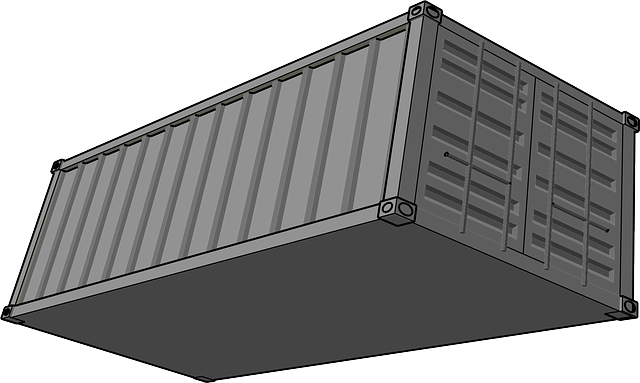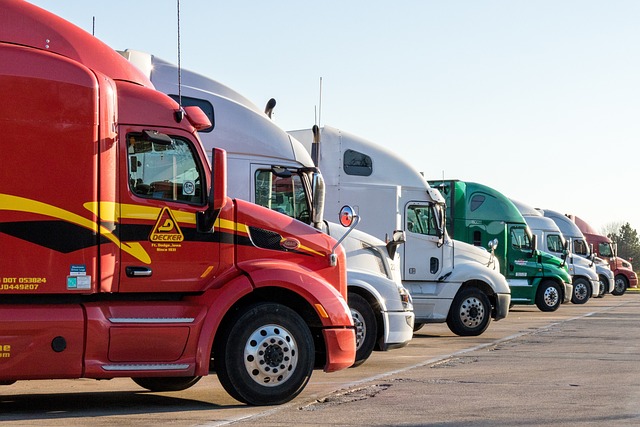Insurance providers face challenges managing multi-truck physical damage policies due to complex operations and vast distances covered. Traditional manual processes are inefficient, leading to delays and increased costs. Digital platforms with specialized software automate data collection, policy generation, and claim settlements, significantly reducing administrative burdens. These innovations streamline claims processing, improve customer satisfaction, and enhance operational productivity, making digital solutions a game-changer in the trucking insurance sector. Implementing these strategies requires investing in fleet management software, training staff, and conducting regular system audits for optimal performance.
In the dynamic world of trucking, efficient policy administration is key to successful operations. “Using Technology to Streamline Multi-Truck Policy Administration” explores how digital solutions are revolutionizing this complex process, particularly focusing on managing Physical Damage Policies. By leveraging advanced technologies, carriers can navigate challenges related to a multitude of trucks, streamlining processes, reducing costs, and enhancing overall operational effectiveness. This article delves into the benefits and implementation strategies for multi-truck operations, highlighting the transformative power of technology in this sector.
Understanding Multi-Truck Policy Administration Challenges

The administration of multi-truck policies presents a unique set of challenges for insurance providers. With each truck operating independently and often covering vast distances, managing physical damage policies across this diverse fleet is a complex task. Traditional methods often rely on manual processes, which can be time-consuming, error-prone, and inefficient. These include separate handling of policy applications, claims processing, and renewals for each vehicle, leading to delays and increased administrative costs.
Moreover, keeping track of numerous vehicles, their drivers, and associated physical damage coverage requires a robust system. Insurers need to ensure accuracy in tracking policies, identifying potential risks, and managing renewals to maintain compliance. Technology offers a solution through digital platforms that streamline these processes. By implementing specialized software, insurers can automate data collection, policy generation, and claim settlements for multi-truck operations, significantly reducing administrative burdens.
Leveraging Technology for Efficient Physical Damage Policies Management

In today’s digital era, leveraging technology has become a game-changer for managing complex multi-truck operations, especially in the realm of physical damage policies. Traditional methods often involve a labyrinthine process, requiring manual data entry and cumbersome paperwork. However, with cutting-edge software solutions, insurance providers can now streamline this aspect efficiently. These technologies enable quick and accurate claim processing by automating data extraction from documents, reducing human errors, and speeding up settlement times.
By implementing digital platforms, insurers gain a competitive edge. They can handle a higher volume of claims, improve customer satisfaction through faster response times, and enhance overall operational productivity. Moreover, advanced analytics incorporated into these systems provide valuable insights into claim patterns, enabling underwriters to adjust risk assessment models and pricing strategies for physical damage policies accordingly.
Digital Solutions: Streamlining Process and Reducing Costs

In today’s digital era, the insurance industry is undergoing a metamorphosis, especially in managing complex multi-truck operations. One of the most significant advantages is the adoption of digital solutions, which are revolutionizing policy administration. By leveraging technology, insurers can streamline processes and significantly reduce costs associated with physical damage policies for multiple vehicles.
Digital platforms offer efficient and accurate claim processing, enabling quick assessments and approvals. Automated data management reduces manual errors, ensuring precise record-keeping. Moreover, advanced analytics provide valuable insights, facilitating informed decision-making regarding pricing and risk assessment for physical damage policies. This technology-driven approach not only enhances operational efficiency but also contributes to cost savings, making it a game-changer in the trucking insurance sector.
Benefits and Implementation Strategies for Multi-Truck Operations

In the realm of multi-truck operations, leveraging technology offers significant advantages for policy administration. One of the key benefits is enhanced efficiency; digital systems streamline processes like claims management and data processing, reducing manual effort and potential errors associated with traditional paper-based methods. This results in faster turnarounds for both customers and underwriters, improving overall operational agility.
Implementing these strategies requires a strategic approach. Organizations should invest in robust software solutions designed specifically for fleet management and insurance. Integration of physical damage policies within these platforms ensures seamless coverage tracking and claims handling. Additionally, training staff to utilize the technology effectively is vital; this includes educating them on policy updates, data entry best practices, and utilizing available resources like online portals for customer interactions. Regular system audits and feedback loops can further optimize performance, ensuring the technology adapts to the evolving needs of multi-truck operations.
In conclusion, leveraging technology to streamline multi-truck policy administration offers significant advantages in managing physical damage policies efficiently. Digital solutions not only reduce costs but also enhance operational productivity and accuracy. By adopting these innovations, trucking operations can navigate the complexities of their industry with greater ease, ensuring a robust and cost-effective insurance management system that benefits both businesses and their drivers.
